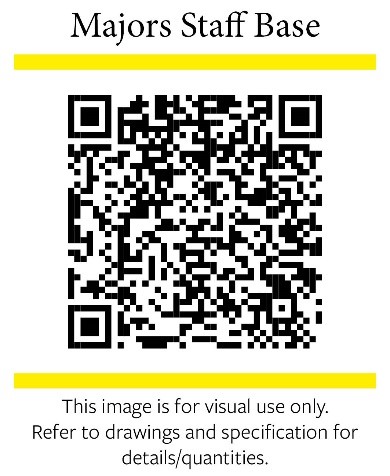

— AUTHOR
Jade Jacques
— DATE
1ST October 2021
— CATEGORY
Insights
— SECTOR
Healthcare
— SERVICES
Architecture
Stakeholder engagement – the process of consulting with people affected by a building project, for better or for worse – is central to design. Without it, a building might not achieve its stated aims, and at worst could risk alienating the very people it’s supposed to benefit. Making sure that our projects are representative can be a real challenge when there’s lots of stakeholders involved, and the pandemic has only made things more difficult: after all, the traditional approach of getting your stakeholders together in a room simply hasn’t been possible.
In fact, it turns out that one of the central images of the pandemic – the QR code – is also a great way of sharing our vision for a building. By combining architectural drawings with QR codes, we can give stakeholders a quick, easy way to access additional information online, including panoramas that allow them to step inside a 3D model of the space and look around.
Approaches like this have been particularly helpful for our healthcare projects. Over the past year, we’ve been working with Bedfordshire Hospitals NHS Foundation Trust to expand the Emergency Department at Luton & Dunstable Hospital. EDs are notoriously complex spaces, and redeveloping them involves working with a variety of stakeholders on a live site. We’ve had to ensure that the new department works efficiently as an integrated whole, while meeting the needs of all its subdepartments – no mean feat within the context of a unique hospital environment.
NHS staff are extremely busy at the best of times, and the pandemic has certainly not been the best of times. Without the option of large consultation meetings, we’ve found ways to bring the proposals to staff: providing drawings which can be pinned up in their work rooms, and adding QR codes that allow future users of the department to explore our proposals in a fast, engaging way. This makes it particularly easy when staff work a range of shifts, as they can access the information at any time of day.
This sort of flexibility is essential when your goal is ensuring no one gets left out of the consultation process, but there are other kinds of accessibility that matter, too. As architects, we work with detailed plans and drawings on a day-to-day basis, and it can be easy to take their readability for granted – not to mention the associated jargon. Explaining our ideas in a clear, inclusive way is a crucial part of our jobs, and tools like panoramas, virtual fly-throughs and augmented reality do this in a way that allows people not simply to understand a proposed space, but to actually feel it at first hand. Issues such as passive supervision are much easier to explore in this way, as stakeholders can experience sightlines, movement and their presence within a room.
For instance, the QR code below links to a web-based panorama, showing the view from the Majors Department staff base within Luton & Dunstable Hospital’s Emergency Department. This is a key view for all staff, as they need to understand how much supervision they can have over cubicles, and how the building’s existing structure might affect this. When developing the designs, we added a glazed screen behind the staff base so that staff could better supervise the cubicles in that direction, while still keeping a physical barrier for infection control.

It’s advances in software that have made these types of engagement possible, and taken us a great leap beyond physical models (though it’s worth noting that these still have their uses in particular contexts). Using Revit, we can rapidly export panoramas without the cost and time of a full CGI – and the sense of finality that “glossy” visuals can imply. And it’s worked, too: stakeholders have been able to give us more feedback using these methods, ultimately leading to better final designs and buildings that work for everyone. We’re now looking at different ways of capturing this feedback remotely, and continuing to develop and improve the way we talk – and, more importantly, listen – to our stakeholders.
Written by:
Associate Director
Jade Jacques